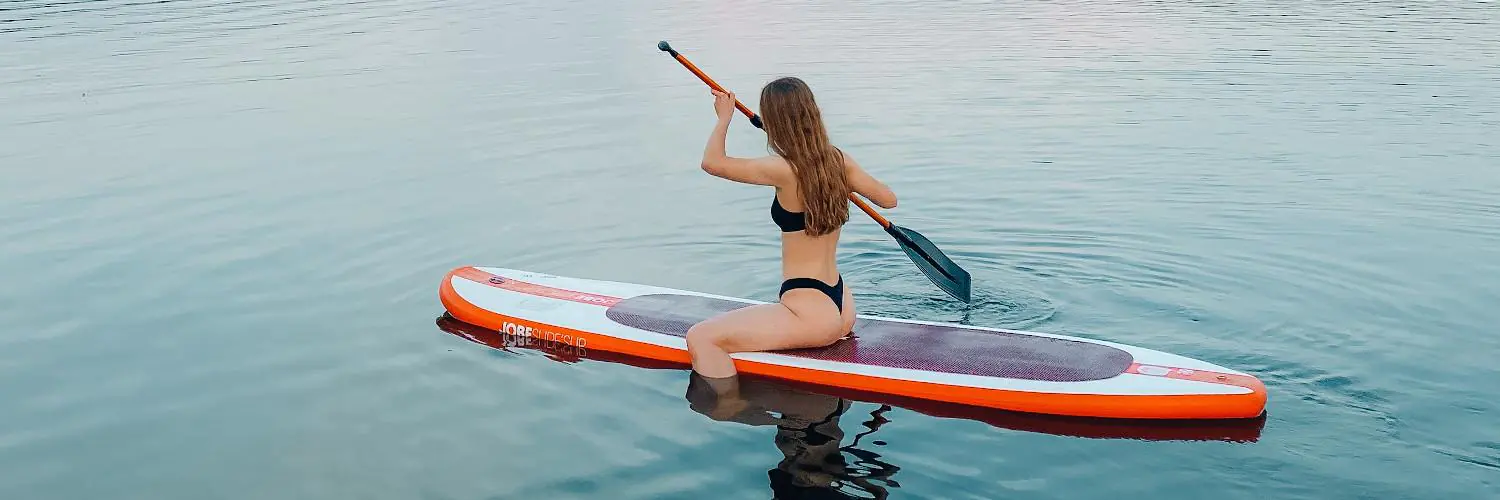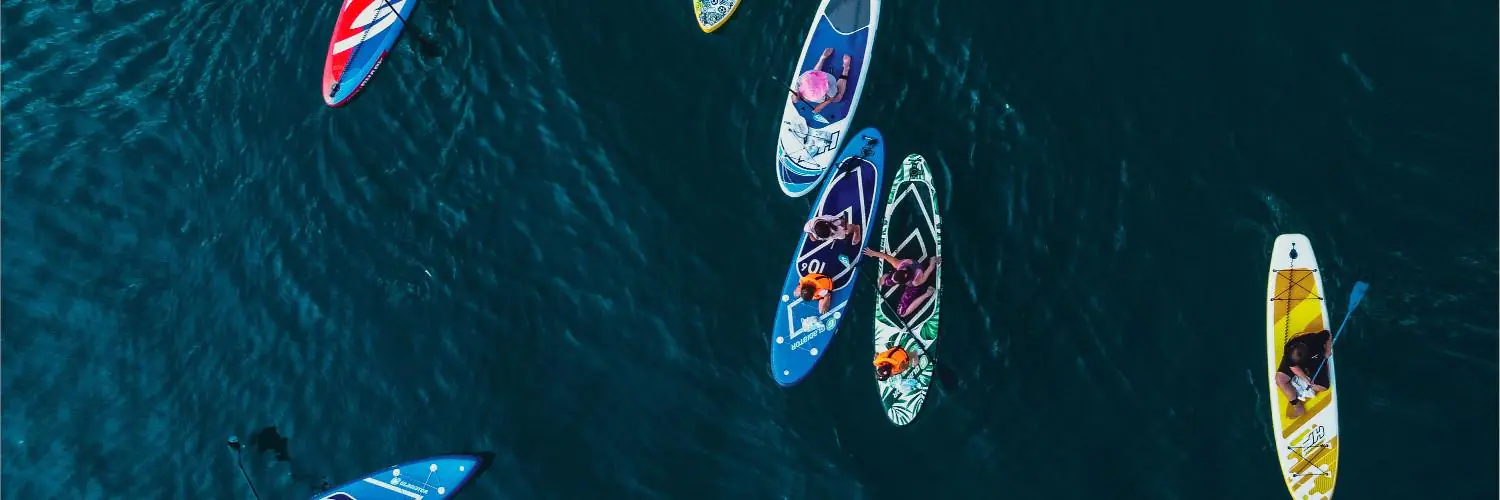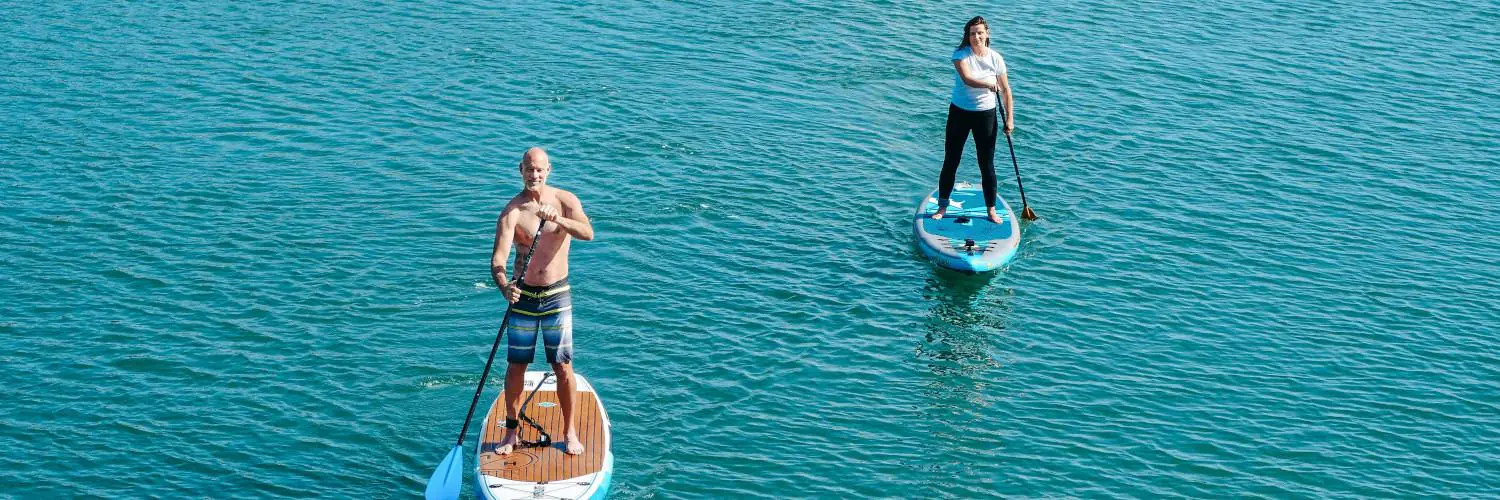Standup paddleboarding has seen a significant rise in popularity as both a recreational activity and a form of exercise. Enthusiasts looking to merge their passion for paddleboarding with the satisfaction of DIY projects may find a sup building kit to be a rewarding endeavor. Such kits provide all the necessary components and instructions for individuals to construct their own paddleboard. Typically, these kits range from basic materials to more advanced and detailed packages, including pre-cut marine plywood for fishbone frameworks, which are a popular choice for their ease of assembly and light weight.
The process of building a paddleboard at home with a sup building kit allows for personalization and a hands-on understanding of the craft behind the board. It appeals to those who appreciate woodworking and the customization it brings. Some kits even include precision-cut components to simplify construction, making the building process accessible to those who may not have extensive experience in board building.
In selecting a sup building kit, potential builders are presented with options like hollow wood SUP and surfboard frameworks or foam-based kits. While full kits typically include all the raw materials needed, from the framework to fiberglass and resins for coating, there are variances in shipping restrictions; for example, full kits may not be available for international shipping. For those who prefer environmentally sustainable options, wooden kits offer an aesthetically pleasing option with the added benefit of being renewable and biodegradable.
Table of Contents
Understanding SUP Building Kits
Standup paddleboarding (SUP) has gained significant popularity, and DIY enthusiasts can get involved by using SUP building kits. These kits provide a comprehensive solution for building a durable and stylish paddleboard.
Kit Components
The core components of a SUP building kit typically include:
- Frame: Often consists of CNC-cut ribs and a spine for hollow wood construction.
- Skin: Marine plywood or thin wood planks that cover the frame.
- Epoxy Resin: A strong adhesive used to seal and bond the wood pieces.
- Fiberglass Cloth: Applied over the wood to create a hard, water-resistant surface.
- Fin Box and Fins: Essential for navigation and stability in the water.
These components allow individuals to construct their own wooden SUP with a step-by-step approach.
Types of SUP Kits
SUP building kits come in various forms to suit different skill levels and preferences:
-
Fishbone Framework Kits
- Ideal for global shipping.
- Excludes full wood planks for the outer skin.
- Perfect for builders who prefer to source their own skin material or have design customization in mind.
-
Complete Building Kits
- Contain all necessary materials, including wood planks.
- Typically recommended for domestic shipping due to size and weight.
- Suited for those seeking a ready-to-build package.
Each type is designed for strip-planked wood construction, offering a blend of traditional craftsmanship and modern materials to create a paddleboard designed for longevity.
The Build Process
Building a SUP using a kit can be a rewarding endeavor, offering a personalized watercraft with the satisfaction of self-construction. It involves careful selection of a kit, preparing tools and workspace, and following a detailed step-by-step construction process.
Selecting the Right Kit
Individuals should select a SUP kit that aligns with their skill level and the desired type of paddleboard. Options range from frame kits to more comprehensive packages including all required materials. Plans and tutorials are commonly provided, assisting in the decision-making process. For advanced builders, custom dimensions can be utilized, often with the aid of a CNC machine for precision-cut parts.
Tools and Workspace Preparation
Before construction begins, one must prepare a dedicated workspace suited to the size of the SUP and gather necessary tools such as:
- Clamps
- Saws
- Sandpaper
- Epoxy and brushes
Safety equipment like gloves and masks should be worn to protect against dust and fumes. The workspace should be well-ventilated, clean, and organized to ensure a smooth building experience.
Step-By-Step Construction
Following the plans and tutorials closely, construction starts with the assembly of the internal frame, proceeding to the planking phase. Techniques may vary, but here are essential construction steps:
- Frame Assembly: Secure the fishbone framework or alternative internal structures as per the kit instructions.
- Planking: Attach planks to the frame with glue and clamps, shaping them to fit snugly together.
- Sanding: Once the glue dries, sand the board to smooth out the surface, preparing it for sealing.
- Sealing: Apply epoxy resin to seal the wood, providing durability and water resistance.
Through these steps, one creates a functional and aesthetically pleasing wooden SUP.
Finishing and Customization
Once the structural construction of a stand-up paddleboard (SUP) is complete, finishing and customization are critical to both its performance and personal style. These steps necessitate precision and a creative flair to ensure the SUP is ready for use and visually appealing.
Applying Resin and Glass
For durability and a smooth finish, applying an epoxy resin over fiberglass cloth is essential. A builder typically lays the glass over the SUP’s surface, carefully smoothing out any bubbles or wrinkles to prevent imperfections. They then coat the fabric with resin, which, once cured, offers a robust and water-resistant finish. Ensuring the fin box, vent, and SUP handle are properly sealed with resin will enhance the board’s functionality and lifespan. Here is a basic rundown of this process:
- Lay fiberglass cloth over the SUP, trimming excess material.
- Mix the resin following the manufacturer’s instructions.
- Apply the resin over the fiberglass with a brush, covering evenly.
- Allow the resin to cure fully before handling.
Adding Personal Touches
Personalization elevates a SUP from a piece of sports equipment to a reflection of the paddler’s identity. Paddlers might install a custom deck pad for comfort and grip and choose a design that matches their style. The addition of fins, tailored for specific water conditions, and the selection of a leash compatible with their activity type can significantly impact the SUP’s performance. Finally, installing a vent to regulate internal pressure and customizing the board with paint or decals adds both functionality and a personal aesthetic. Here is a simplified checklist:
- Deck Pad: Choose a pattern or color that stands out.
- Fins: Select the right fin setup based on intended water conditions.
- Leash: Opt for a length and strength suitable for your paddling environment.
- Vent: Install it securely to maintain internal SUP pressure.
- Custom Graphics: Paint or apply decals before the final resin coat to encapsulate the design.
Purchasing and Support
When it comes to crafting a stand-up paddleboard (SUP), enthusiasts have the option to purchase comprehensive SUP kits and benefit from dedicated customer service and support provided by the suppliers.
Where to Buy SUP Kits
SUP kits can be procured from specialty suppliers who cater to DIY builders and paddleboard enthusiasts. Clearwood Paddleboards, for instance, offers a selection of wooden SUP frame kits, which contains the necessary “fishbone” frameworks for hollow wood constructions. While their full kits are not available for international shipping, the framework kits can be shipped globally. Another supplier is Greenlight Surf Co., which provides pre-cut SUP blanks, significantly reducing shaping time for the builder.
For those interested in a variety of SUP building methodologies, one can turn to Fiberglass Supply, which showcases an array of SUP kits including foam core boards, stitch and glue wood construction, and frame kits suitable for strip-built construction.
Customer Service and Support
Companies specializing in SUP kits understand the importance of customer service and typically offer robust support structures. Suppliers commonly provide an email contact and sometimes a link to instructional resources to assist customers during the building process. Many of these companies have extensive experience and are equipped to ensure 100% customer satisfaction through their knowledgeable support teams. By following suppliers on social platforms or subscribing to their newsletters, customers can stay informed and receive assistance conveniently.
Getting the Most Out of Your SUP
When an individual invests in a stand-up paddleboard (SUP) building kit, it unlocks the potential for a truly customized paddling experience. To get the most out of a paddleboard, it’s important to focus on a few key aspects that enhance performance and enjoyment.
Firstly, the leash is critical. A good quality leash ensures safety and prevents the SUP from drifting away if one falls into the water. It acts as the lifeline between the paddler and the board, especially important in rough water conditions.
The fins play a vital role in the stability and direction of a paddleboard. They assist in tracking and help maintain a straight path while paddling. While most kits come with a standard fin, users might consider upgrading or changing fin configurations based on their skill level and the types of waters they navigate.
Care and Maintenance:
- Rinse with fresh water after use in saltwater.
- Check for dents or damage regularly.
- Store in a cool, dry place away from direct sunlight.
Here’s a quick checklist before one heads out:
| Item | Check for |
|---|---|
| SUP Structure | Integrity and absence of damage |
| Leash | Durability and secure attachment |
| Fins | Proper installation and condition |
Paddleboarders should also strive to improve their skills. Here are some ways:
- Technique refinement – Seek professional instruction to refine paddling technique.
- Consistent practice – Frequent outings increase balance, control, and overall proficiency.
By focusing on equipment maintenance, safety features like the leash, and skill advancement, enthusiasts can enhance their SUP experience. Whether cruising calm lakes or weaving through ocean waves, a well-maintained, properly equipped paddleboard makes every journey more rewarding.








